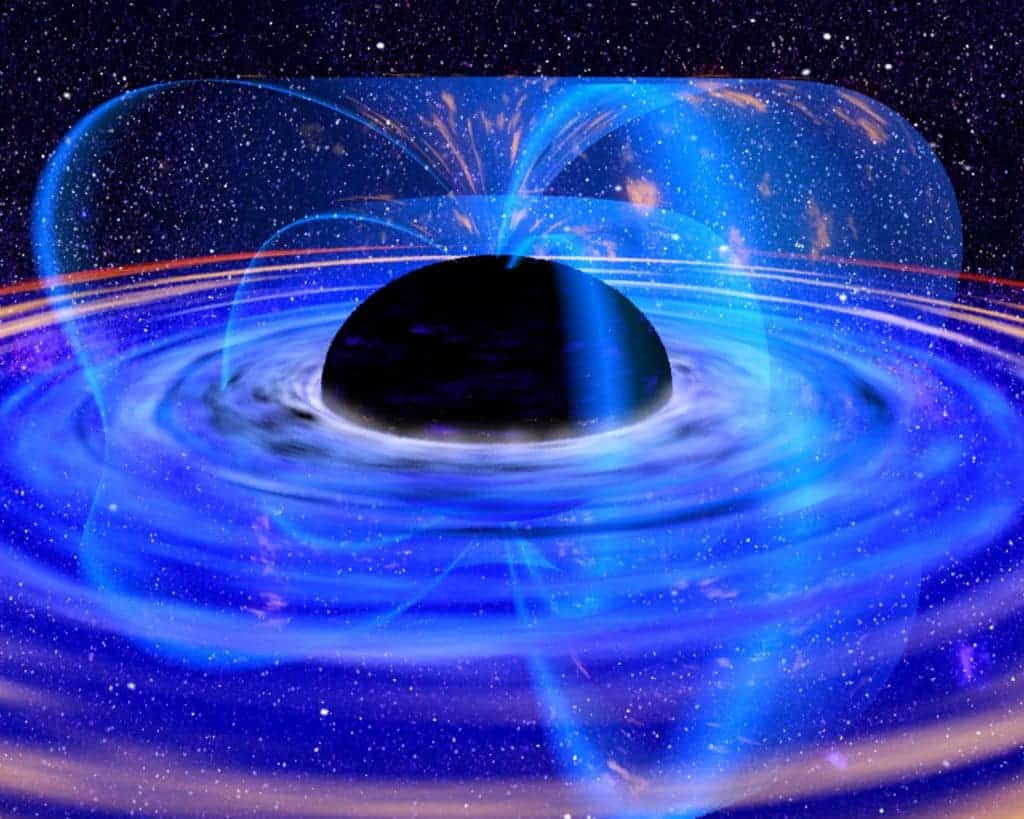We know there’s a supermassive black hole at the center of our galaxy, and now we have evidence for another one. This ‘mid-sized’ black hole is still 100,000 times more massive than our sun.

It’s widely accepted that most galaxies have a supermassive black hole at their core. While the existence of such a black hole in our galaxy has almost been settled, not the same can be said for other types of black holes. Astronomers have long chased evidence of mid-sized black holes — black holes larger than the ones formed from a single star, but still much smaller than supermassive black holes. Now, they might have finally found one, and it suggests that our galaxy grew by cannibalizing other galaxies.
In a study published in Nature Astronomy, scientists led by Tomoharu Oka from Keio University, Japan, describe a “peculiar” molecular cloud sitting near the center of the Milky Way. They found that this molecular cloud exhibited some properties which are hard to explain, but would fit in very nicely a with “gravitational kick” caused by an “invisible compact object.”
They modeled their data and found that the structure is a very promising candidate for an intermediary black hole (IMBH) — a hypothetical class of black hole with mass in the range 100 to one million solar masses. This particular black hole would be on the range of 100,000 solar masses. We’re not really sure that IMBHs even exist, as they’ve proven to be quite elusive, but this seems to be a very promising candidate.
“It’s a very careful paper and they have gorgeous data. It’s the most promising evidence so far” for an intermediate mass black hole, says astronomer Kevin Schawinski of the Swiss Federal Institute of Technology in Zurich, who was not involved in the study..
Brooke Simmons at the University of California, San Diego, who was also not involved in the study, described it as “careful detective work.”
But if this is the case, then how did the black hole form, and how did it get to the near-center of the galaxy? IMBHs are too big to form from the collapse of a single star — which is how stellar black holes form. They also don’t have the extreme conditions required to become a supermassive black hole. There are three main theories regarding their formation:
- the first is through the merging of several stellar black holes;
- the second is the runaway collision of massive stars which then collapse together;
- the third is that they are primordial black holes formed in the Big Bang.
Oka and Keio believe this IMBH formed through the first option. They propose that a dwarf galaxy was once subsumed by the Milky Way, and its core became this black hole. A lot more evidence is still needed to back up this claim, and that’s exactly what the two astronomers want to do. They will continue to observe the area and follow it long term, looking for clues to its nature and mass.
“The most exciting thing is the likelihood that intermediate mass black holes are real,” Schawinski says. “We know very little about how black holes form.” But if Oka’s team or others are able to find a population of such objects, “we can put our ideas to the test.”
As the authors themselves put it, confirming the existence of such objects would make a considerable contribution not only to astronomy, but to modern physics itself.
“Further detection of such compact high-velocity features in various environments may increase the number of non-luminous black hole candidate and thereby increase targets to search for evidential proof of general relativity. This would make a considerable contribution to the progress of modern physics.”
Journal Reference: Tomoharu Oka, Shiho Tsujimoto, Yuhei Iwata, Mariko Nomura & Shunya Takekawa — Millimetre-wave emission from an intermediate-mass black hole candidate in the Milky Way. doi:10.1038/s41550-017-0224-z



